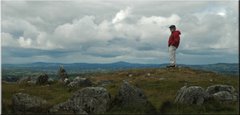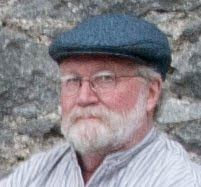But something happened at my job in this past week that I would be derelict in not mentioning. It is not pleasant. It is saddening, and perhaps ultimately demoralizing, but it is significant.
It is the end of a grand, 49-year-old promise to the people of the state of California by their government: that every California resident, regardless of financial status, who could benefit from higher education would be able to enroll in a California college or university that would suit his or her abilities and needs.
In 1960, the state legislature enacted the California Master Plan for Higher Education, a truly revolutionary, integrated strategy for accommodating the anticipated crush of "Baby Boomers" once they reached college age. From my perspective, it was not only a Master Plan, but a masterful one, generally credited in large part to the vision of two people, Edmund G. ("Pat") Brown, then Governor, and Clark Kerr, then President of the University of California system.
The Master Plan was implemented quickly, and has served California superbly for nearly half a century. Its details are succinctly laid out in the Wiki article linked above. And, possibly with isolated exceptions, its promise has been kept: every California resident who could benefit from higher education has been able to enroll in a California University, State College, or Community College.
Until last week.
Above: San Francisco ABC television story from the first day of classes. If you click on this, you'll have to put up with a 15-second advertizement.
The "perfect storm" of denied opportunities elsewhere happened this Fall. California's budget meltdown caused draconian cuts in the UC and CSU systems, slashing enrollments in those two legs of the Master Plan's tripod, which shifted a tidal wave of students to the Community Colleges. That system, however, also had its financial resources gutted, causing massive cutbacks in course offerings, so students by the thousands in the San Francisco Bay Area alone couldn't get all of the courses they needed or wanted at other community colleges.
That left DeAnza, the late-start, huge campus of last resort.
This week was the first week of classes. It was probably one of the worst weeks of our professional careers for those of us who work there; worse than that for the thousands of students who were told "no" one last time, with nowhere else to go.
The promise of the Master Plan was dead. Not officially, of course. Nobody in Sacramento will say that, because nobody in the capitol building had to look hundreds of students in the eye and tell them there was no opportunity for them here or anywhere else. It's not part of official policy that the Master Plan's promise is no longer valid, but, in reality, it's as dead as Caesar.
Numbers from DeAnza's first week of the 2009-10 school year:
Total number of students enrolled in at least one course: More than 25,000
Number of those who could not enroll in as many courses as they wanted/needed: 8,400
(These will not qualify as "full-time" students as a result, and financial aid they receive may be in jeopardy because of their part-time status. Moreover, those who are carried on their parents' health insurance under a "full-time college student" clause will lose that also.)
Number of students who could not enroll in any courses at all: 2,300
Two thousand three hundred students went to the trouble and expense of registering in my college this quarter who were denied any service whatsoever. All they got was a hunting license for a griffin or a chimera. And, if they bought a $70 parking permit, they also got a hunting license for a parking space, only slightly less abundant than griffins.
For those 2,300 students -- who will now not be students at all -- the Master Plan's promise is not only dead, it's a cruel joke. Since I was almost certainly the last one to say "no" to more than a few of them, I was their ultimate agent of the promise's violation. I'm not going to have a wonderful weekend, but it will probably be a better one than theirs will be.
We could see this coming, at least a little bit. During the week before the beginning of classes, during pre-term meetings and planning sessions, my division Dean told us that, even at that time, there was not a single seat available in any science class section, and that only a handful of openings were still available in our very large number of mathematics sections. By the beginning of the week, the total number of student names on waiting lists, campus-wide, was over 14,000 -- and that's just the students who went to the trouble of signing up on a waiting list instead of simply giving up.
And so, since we are the last ones a student sees when he or she still has hope of getting into a class, we teachers became the ones who had to bring the final "no" down: No, you cannot enroll in this class. No, there are no other classes I can suggest. Please try again next quarter.
I'm not anxious right now to try to analyze how we got here, or to cast blame, or to assess whether or not the promise was a good idea to begin with. I'll do all of that -- all of us at DeAnza will do all of that -- once a short period of stunned numbness is over. But right now I'm just overwhelmed by the reality of the violation of an ideal that has guided my entire 36-year career.
We let them down.
================================
Links and statistics courtesy of DeAnza President Brian Murphy.
================================
Links and statistics courtesy of DeAnza President Brian Murphy.
================================














